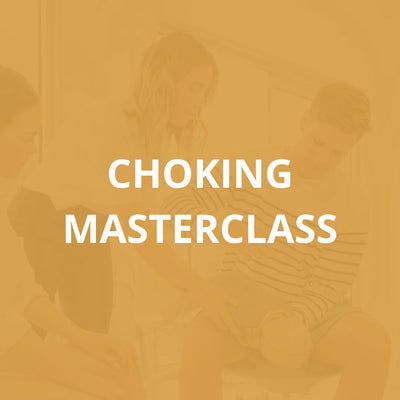Pain Relief for Kids: Your Guide to The How Much, When and Why
When our little loves are in pain, we want nothing more than to help them. Whether that’s a big cuddle, a drink, some food, distraction therapy or pain relief. It can be tricky to know what medication we can and cannot use for our kids, and when to use pain medication.
This guide discusses common pain reliving medications that we can use to help alleviate their pain, as well as when and why we use them.
There are many ways we can provide comfort to our little loves when they are unwell. A nice warm cuddle, warm baths and heat packs are all so comforting when our little ones are unwell or in pain. However, sometimes we need to give them pain medication to alleviate the pain.
In Australia, Paracetamol and Ibuprofen are the two most common medications given for pain relief that are safe and very effective.
These mediations do not ‘treat’ the cause of the pain they just relieve the symptoms.
Any child who is unwell or in moderate to severe pain should be seen by a doctor to find out the cause.
Paracetamol and Ibuprofen can be helpful for pain related to injury or any painful condition including ear infections, sore throat, sore tummy or a broken bone.
Let’s talk about what to use, when, how often, how much and some of those confusing labels and dosage recommendations.
PARACETAMOL
Paracetamol is also known as- Panadol, Dymadon and Panamax.
There are many different brand names, but you will notice on the bottle they all have the same ingredient- paracetamol.
Paracetamol can be used for mild to moderate pain in babies from 1 month of age. Paracetamol helps to relieve pain and it can also work to relieve symptoms of a fever.
If too much paracetamol is given for too long a period it may cause harm. If you need to give your child paracetamol for more than 48 hours, it is recommended you see a doctor.
Paracetamol can be given every 4-6 hours, up to 4 times in 24 hours.
If your little one is taking any other medications remember to check to see if that medication contains paracetamol. You can have a chat to your pharmacist for more specific advice.
IBUPROFEN
Ibuprofen is also known as Nurofen, Brufen, Dimetapp or Advil.
Ibuprofen is a non-steroidal anti-inflammatory drug (NSAIDs), therefore often works well for ‘inflammatory’ type pain (redness and swelling). Ibuprofen can be used for with mild to moderate pain and it can help to reduce a fever, if needed.
Ibuprofen should not be given to children under 3 months of age, a child with a bleeding disorder or a child that is dehydrated.
Ibuprofen can be given every 6-8 hours but no more than 3 times a day. If you need to give your child ibuprofen for more than 48 hours see your doctor. For short-term use, it can be taken with a glass of water and no food, however if this causes a stomach ache then offer with a glass of milk or food.

Bottle Confusion and Dosing
It can be confusing when one bottle of children’s paracetamol says to give 4ml to your 4 year old and another says to give 6ml. It isn’t a mistake on the manufactures behalf; it is that the amount of medication per ml in the bottle is different, aka a different strength.
If you look at the bottle it will tell you the milligrams (mg) per millilitre (ml) and this is where the dosage changes. That all sounds very confusing I know, but this is why it is crucial to always check the dose, every time you give medication and particularly when you purchase a new bottle. You could be under dosing your child and they do not get the help they need, or worse you could be over dosing them.
When administering medication give the dose that is written on the bottle for your child’s weight. The estimate dose on the bottle for your child’s age is a guide only. If you do not know your child’s weight give the estimated dose for your child’s age. If your child is lighter than most children their age give the dose recommended for younger children in the next age bracket down. Or check with your Doctor or pharmacist if your child is smaller or heavier for their age for an appropriate dose.
Can I give Ibuprofen and paracetamol together ?
Yes, to ensure you child’s pain is under control you can alternate the use of paracetamol and ibuprofen or even give both at the same time. Remembering paracetamol can be given 4-6 hourly 4 times a day and ibuprofen 6-8 hourly a day 3 times a day. If you have to give multiple medications make sure you keep a diary of what you have given and when. This is a particularly helpful for those sleepless nights with teething babies.
(We love using these Medicine Trackers from Sick Happens.)
Accidental Overdose
Did you know that paracetamol is one of the most common medications taken by children in an accidental overdose? An overdose of paracetamol can cause harm to the liver.
An overdose of ibuprofen can cause stomach upset and can sometimes effect breathing and cause drowsiness.
If your child takes an overdose call the Poisons Information Centre (13 11 26 in Australia) for advice. Try and have the bottle/tablets with you and the doses they took.
Prevention is key- keep medicine locked away or in a high cupboard, keep tablets in their wrapper until ready to be taken and always leave the child resistant lid on medication bottles.
Cough Syrup
And just a little word on cough syrup- save your money. It is not recommend for kids under 6 years unless a health care professional recommends it. They are not proven to be effective in this age group and can be potentially harmful in kids under 6.
You can try honey for that post viral cough that just won’t go away, but do not use honey in kids under one.
It is so hard seeing our little ones in pain. Providing additional love, cuddles and adequate pain relief when needed hopefully they can be happy and pain free in a short amount of time.
If your child’s pain does persist seek medical help and don’t forget to provide your child with adequate pain relief before you seek help, simple pain relief will not mask any signs of serious illness and will make them feel more comfortable.
Written in June 2022 by Laura, a Paediatric Emergency Nurse and mum of two little loves. As always, information on this website is for educational purposes only.
Please consult your GP for information specific to your child.
References
https://www.rch.org.au/kidsinfo/fact_sheets/Pain_relief_for_children/
https://www.betterhealth.vic.gov.au/health/conditionsandtreatments/acute-pain-management-children
https://raisingchildren.net.au/guides/a-z-health-reference/medications
https://www.rchpoll.org.au/polls/over-the-counter-medicines-what-parents-use-and-why/
The quick thinking of Warrnambool parents Lucy and Pat Mahony saved their 18-month-old son Ollie from serious scars for life after he pulled a cup of coffee onto himself.
How do I check my baby’s temperature? 🤒 What is the best way to check a baby’s temperature? There are so many different types and brands of thermometers out there. What thermometer should I buy?
We're here to answer all your questions!
When our little loves are in pain, we want nothing more than to help them. This guide discusses common pain reliving medications that we can use to help alleviate their pain, as well as when and why we use them.









